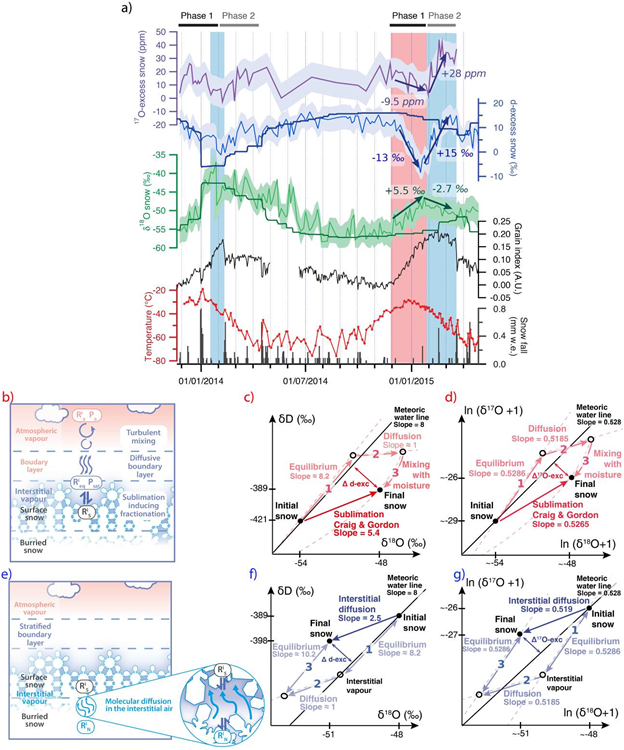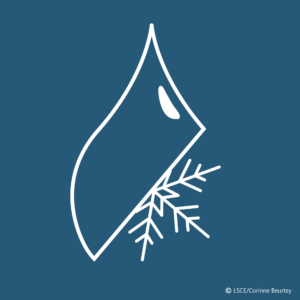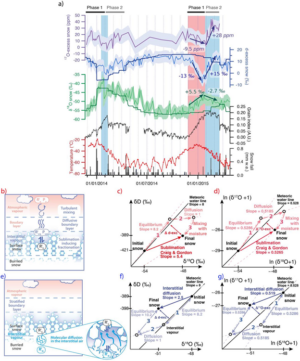Water isotope ratios of ice cores are a key source of information on past temperatures. Through fractionation within the hydrological cycle, temperature is imprinted in the water isotopic composition of snowfalls. However, this signal of climatic interest is modified after deposition when snow remains at the surface exposed to the atmosphere. Comparing time series of surface snow isotopic composition at Dome C with satellite observations of surface snow metamorphism, we found that long summer periods without precipitation favor surface snow metamorphism altering the surface snow isotopic composition. Using excess parameters (combining D,17O, and 18O fractions) allow the identification of this alteration caused by sublimation and condensation of surface hoar. The combined measurement of all three isotopic compositions could help identifying ice core sections influenced by snow metamorphism in sites with very low snow accumulation.
Auteurs : Mathieu Casado, Amaelle Landais, Ghislain Picard, Laurent Arnaud, Giuliano Dreossi, Barbara Stenni, Frederic Prié
Ref. : Geophysical Research Letters 48 (17), 2021



